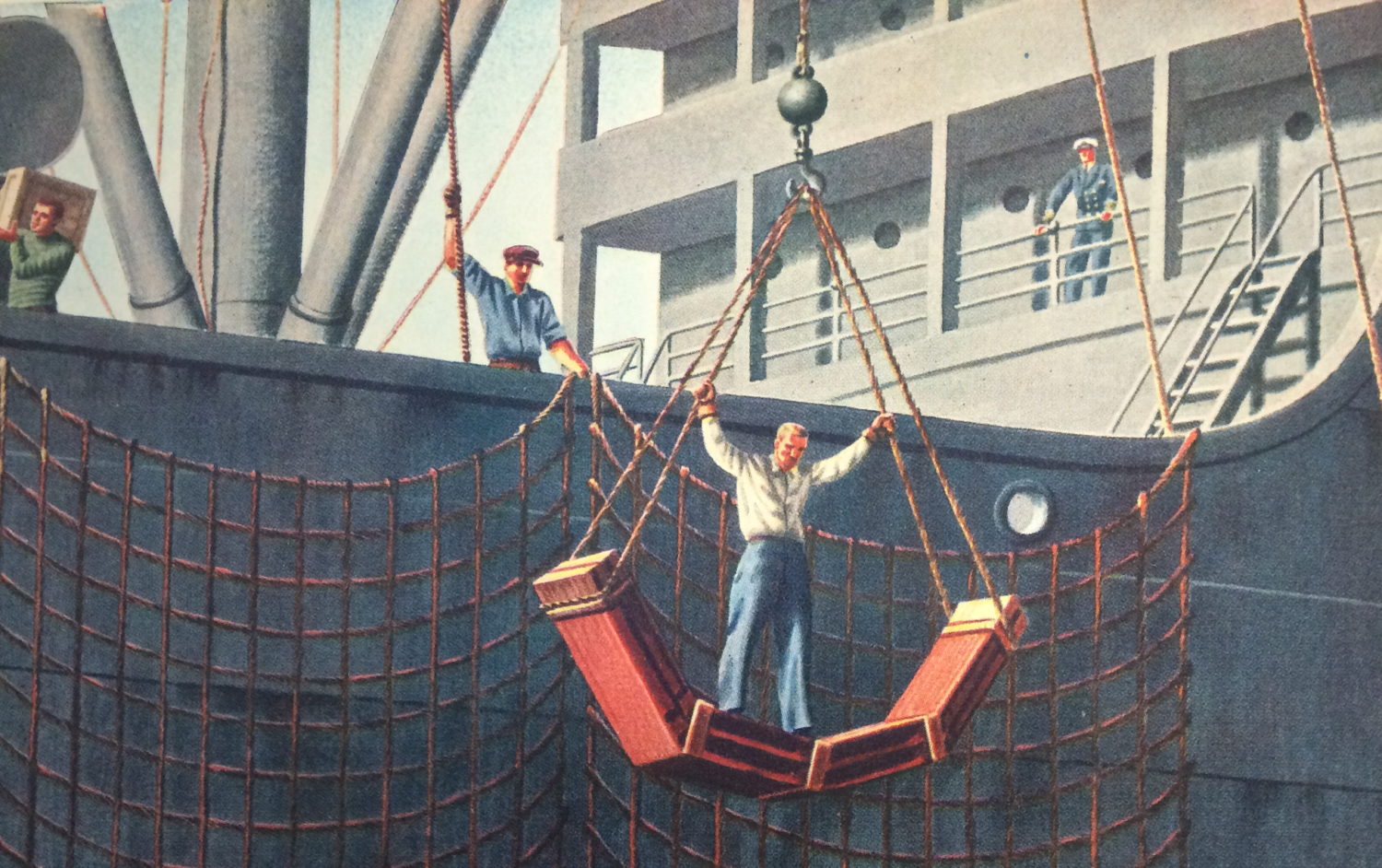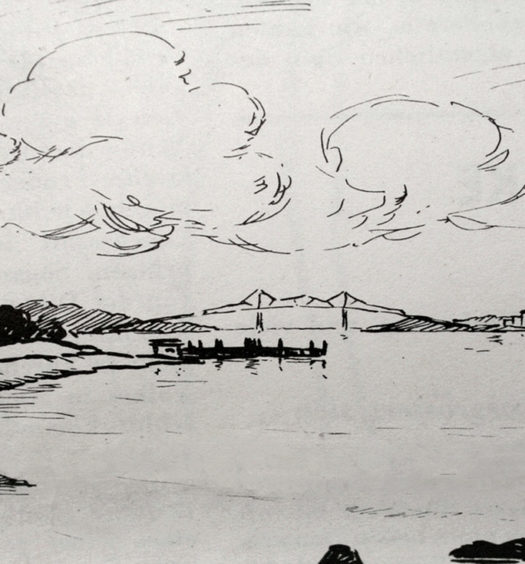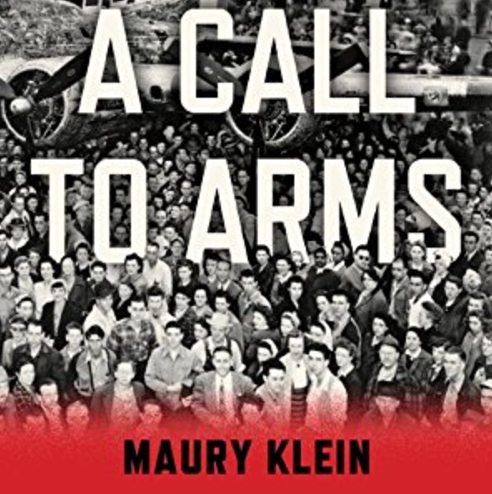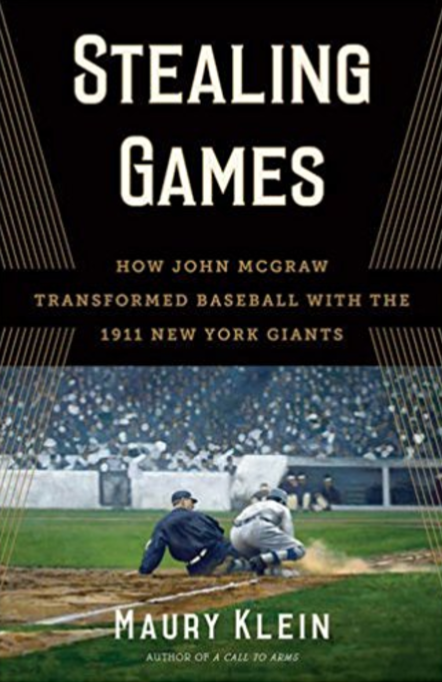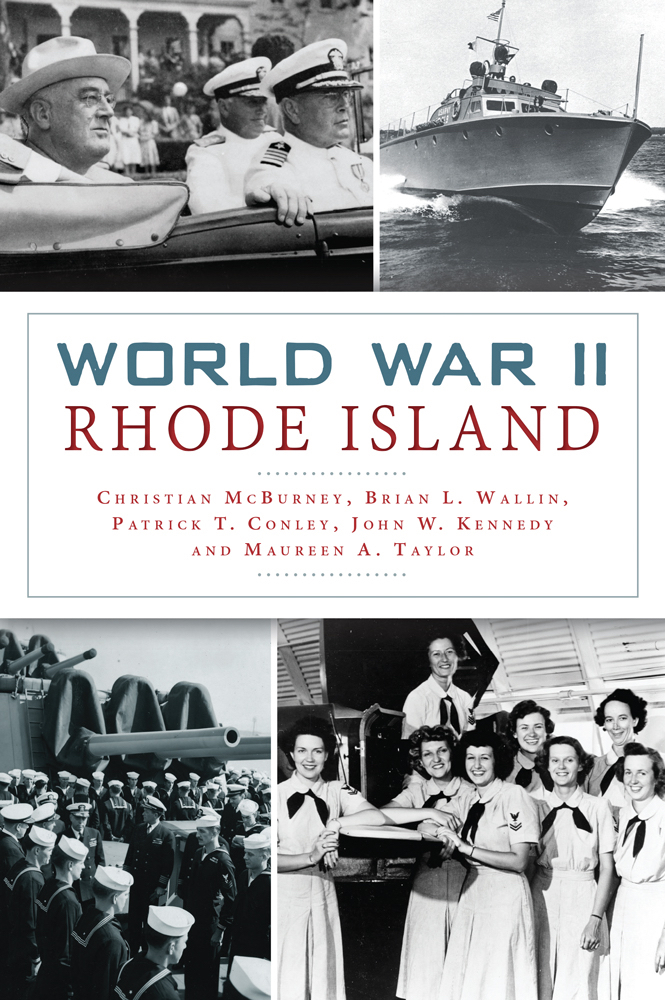[From the editor: Maury Klein is one of Rhode Island’s most prominent authors writing history books for a national audience. A long-time professor at the University of Rhode Island, he is now Professor Emeritus of History at the university. His focus has been American business history, and perhaps his two best known works are The Life and Legend of Jay Gould (the railroad magnate) and Rainbow’s End: The Crash of 1929. Relevant to the recent publication of World War II Rhode Island (History Press, 2017) by five contributing authors to our Online Journal of Rhode Island History, Professor Klein has also written the most definitive book to date on the incredible build-up of civilian manufacturing in the United States during World War II: A Call to Arms, Mobilizing America for World War II (Bloomsbury Press, 2013). The following is an interview of Maury Klein about this book (and at the end a bit about his most recent book on early baseball).]
Editor: Thank you for writing this book on the enormous mobilization effort America undertook in World War II to produce more war materiel than ever produced in world history, by far. The United States had to fight a war across two oceans and three continents, and to do so it had to build and equip a military that was tiny before the war began. America buried the Axis powers in aircraft, ships, tanks, and guns. American industry, and American workers, thus played a key role in winning World War II, and is an underreported story. Yet it was not a smooth transition from a private industry still suffering from the Great Recession. Your book discusses both the struggles of the federal government bureaucracy in organizing the war effort and making difficult decisions, and the thousands of privately-owned factories employing millions of workers. Let’s start with the federal government. Overall, how do you think it performed during the war, starting with President Roosevelt?
Maury Klein: President Roosevelt faced a herculean task and undertook it without flinching. He made mistakes but took the most effective approach by creating ad hoc agencies rather than using existing departments, and by reorganizing the executive branch in such a way as to concentrate more authority in his hands. Congress remained its usual divided self, with Republicans intent on blocking anything FDR did, until the attack on Pearl Harbor. After that, Congress acted with more speed and efficiency than people today are accustomed to seeing from them. Enough members recognized that times had ceased to be normal and that the threat was great. Once Pearl Harbor settled the issue of whether and how we would be involved in the war, differences at all levels of society and government began melting away and the war effort took on more unison than it had ever had. But it still needed direction, and that took some time to develop.
Editor: There are so many amazing stories of individual civilians ramping up their efforts and fulfilling production goals in manufacturing military arms and other products necessary to the conduct the war. What is your overall sense of the effort and success of private owners and their workers during the war?
Maury Klein: As I said in the preface to my book, the notion of a “Greatest Generation” is an overblown one. There is no such thing, and no way to measure or compare one generation to another. I call them the Unluckiest Generation because they had to cope with both the Great Depression and the war. Like every other generation, this one had its heroes, its unsung overachievers, its patriots, its average people, its shirkers and slackers, those who tried to work the crisis for their own advantage, and those who tried to ignore the fact that there was a war on. Pearl Harbor brought out a tidal wave of patriotism, but it also brought out such things as the internment of West Coast Japanese Americans. The size and scope of the Black Market, or Mr. Black as they called it, spoke volumes about the willingness of many people to skirt the rules.
Editor: As part of my own research of the numbers of Navy aircraft located at the Quonset Point Naval Air Station, I found the following increases: just 4 on February 22, 1942, shortly after Pearl Harbor; 52 on December 8, 1942, a year after Pearl Harbor; 132 on May 31, 1943; and 335 on January 5, 1944. So it took some time to ramp up, but eventually the numbers were impressive. This pattern seems consistent with the U.S. manufacturing efforts overall. Why did it take so long to get to the high level of production?
Maury Klein: Several reasons. First, the aircraft industry was a “boutique” industry when the war started, meaning that planes were made one at a time because there was no market for more of them. But American manufacturers invented mass production. The aircraft industry, and many others, first had to learn how to mass produce their product, which they did. However, mass production requires a great deal of preparation time to design and lay out the factory, acquire the right machines–many of them specialized– and arrange the flow of raw materials. For a while it looks as if nothing is happening. Once all this is done, production begins to flow and then accelerate, especially as workers get more experienced. The book contains several examples of this process in different industries. Once underway, mass production literally won the war, as explained in the chapter entitled “Weapons of Mass Production.”
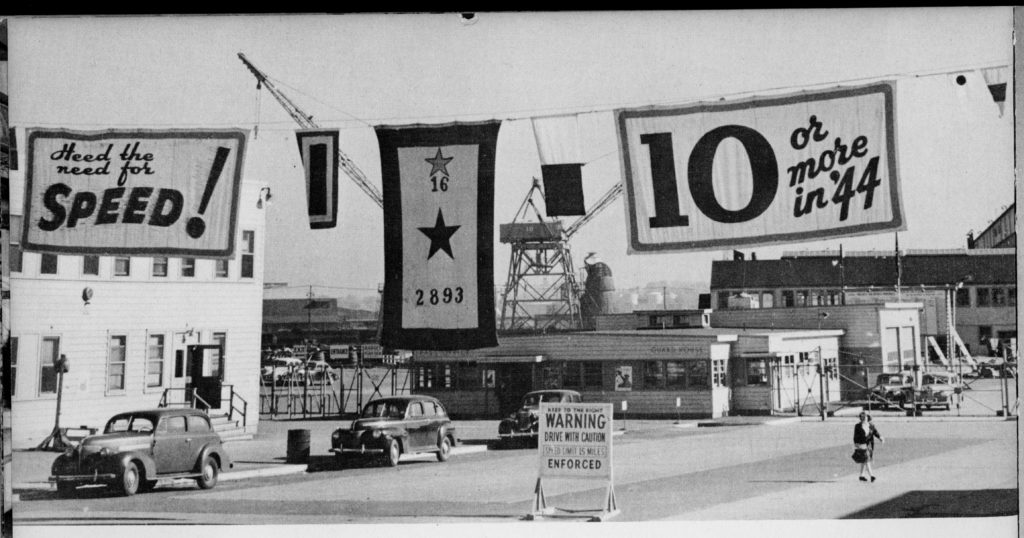
Sign at the entrance to the Walsh-Kaiser Shipyard in Providence exhorting workers to build ten more combat-loaded cargo ships in 1944 (Andreson, Providence Shipyard)]
Editor: Speaking of Rhode Island, its manufacturing contribution was very impressive, building 32 Liberty ships and other armed cargo ships at the Providence Shipyard; manufacturing many of the country’s torpedoes on Goat Island in Newport; the Oerlikon-Gazda anti-aircraft gun being manufactured in the Blackstone Valley; Brown & Sharpe and other precision instrument firms turning to the military effort, along with the state’s textile, rubber, and jewelry firms. In our new World War II Rhode Island book, Pat Conley has a great chapter on this subject. In such a small state, this effort was impressive. Would you agree?
Maury Klein: Rhode Island compiled a fine record of production during the war, but I would have expected no less. It was part of the oldest and most experienced industrial region in the country with a long tradition of manufacturing. It also had a prime location for both supplying and shipping, as well as a labor force experienced in manufacturing.
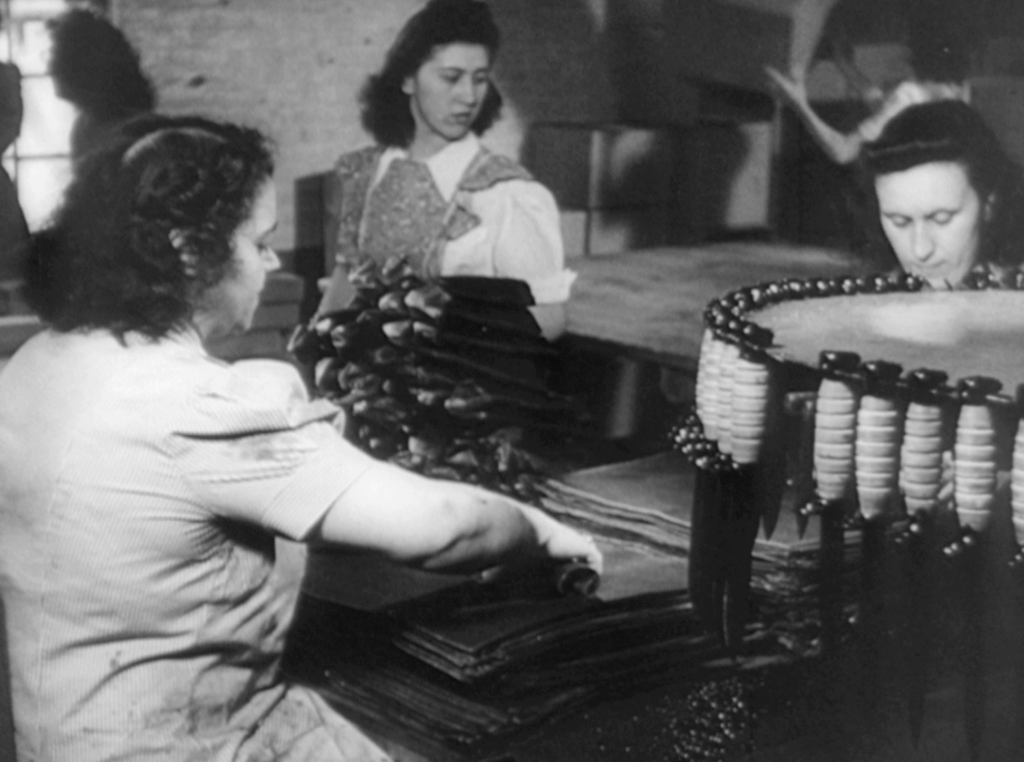
Women making bayonets, probably at the Imperial Knife factory in Providence. (War Department Film, courtesy of BuyOut Footage)
Editor: A big part of the story of the World War II civilian effort was the increased participation in factories by women and African-Americans, who had historically been discriminated against in the workplace but who during the war saw their incomes increase dramatically. Did Rosie the Riveter really exist?
Maury Klein: Yes, she was very real, but only part of the story. Given that military production finally began pulling the nation out of a ten-year depression in May 1940, workers of every color and gender found themselves working more hours and earning more money than ever before. Black Americans migrated in large numbers from the South to northern cities such as Detroit, and huge numbers of Americans migrated to the West, turning that region into a self-sustaining industrial economy for the first time. Women benefitted especially from the demand for workers, and the book has the story of several of them who found their lives changed by the experience. But they had been through this process before, in World War I, and recognized that their job security was again fragile once the war ended. They also had to cope with poor or nonexistent housing in new industrial centers and no way to take care of their children. The book has several poignant examples of families coping with these strains.
Editor: This book covers exceedingly well an amazingly sprawling story. One topic authors face is how to structure their books. How did this process work for you in light of the sprawling topic?
Maury Klein: Finding a workable structure was easily the most difficult task I faced. The book was never intended to be so large, but once I got deeply into it and saw how many different and seemingly unconnected facets the story contained, it just grew as I worked to connect them. The nicest compliment my editor paid me after the book went to press was to say that I had created and imposed a structure where none existed, and that it worked extremely well. Some topics carry with them an innate or logical structure; this one most definitely did not.
Editor: Lastly, I have to ask you about your latest book, Stealing Games, How John McGraw Transformed Baseball with the 1911 New York Giants (Bloomsbury Press, 2016), which I also loved. Reading about early baseball is one of my favorite topics, particularly the New York Giants managed by the colorful John McGraw and led by the great pitcher Christy Mathewson. What made you turn from writing about the history of American business to early baseball? Why did you focus on the New York Giant’s 1911 season?
Maury Klein: Well, baseball is a business, and I have long loved the game and especially the old-time teams. As a kid I played a board game that still exists called APBA baseball, which used math formulas to replicate the actual performance of teams and individual players. They produced cards for old-time teams, and I made a league of teams from every decade from the 1900s to the 1960s. The 1911 Giants caught my eye because the team stole more bases than any other team in baseball history. Looking closer, I found McGraw had put the team together to do just that and to transform the game, which he did. The team also had an interesting cast of characters, including the owner, so after my big World War II book I decided to do what for me was a “fun” book. The team was an odd choice in one sense: as a lifelong Cardinal and Red Sox fan I have always hated all New York teams of any sport, yet here I was writing a book about one of them. Oh well . . . .
[Editor comment: I began as a fan of the St. Louis Cardinals in 1967, became a lifelong fan of the Boston Red Sox in 1968, and also generally dislike all New York teams, but I loved Stealing Games! I felt compelled to ask the following question.]Editor: I am a life-long Red Sox fan as well, as are many of our readers. What was more painful to you: (i) losing Game 7 in 1975 (manager brings in a rookie to start the ninth inning), (ii) losing the 1978 single-game playoff to the Yankees (Bucky Dent’s home run), (iii) losing to the Mets in 1986 (Bill Buckner), or (iv) losing in Game 7 to the Yankees in 2003 (manager refuses to replace Pedro Martinez)?
Maury Klein: Talk about a painful question! I think two and three were by far the most painful experiences. They were each a sudden, shocking moment that couldn’t be comprehended at first. The other two were like inevitable Greek tragedies unfolding . . . and unfold they did. I warned both managers (from my couch). I also bear the deep scars of the umpire’s horrendous call at first base against the Cardinals in the 1985 World Series. My guys deserved much better.
Editor: Do you plan on writing any more books? Is there anything you can share with readers on that score?
Just now, for the first time in my adult life, I am not working on a book. However, I am exploring a couple of possibilities that may come to fruition. One of them has very definite Rhode Island roots and has been on my plate for a long time. It would be a study of Kate Chase and William Sprague and their doomed relationship.
[Banner image: Workers at a Providence wharf load Quonset huts manufactured at Davisville on to a transport vessel. From an advertisement for Autocar heavy-duty trucks in Life magazine, June 12, 1944 (Courtesy of Autocar, LLC©]
